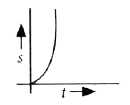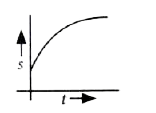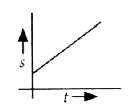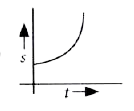Answer
Step by step text solution for Using graphical method, derive the equations v = u + at and s = ut + (1)/(2)at^(2) where symbols have their usual meanings. by PHYSICS experts to help you in doubts & scoring excellent marks in Class 9 exams.
|
Topper's Solved these Questions
MOTION
PRADEEP|Exercise very short answer queation|25 VideosView PlaylistMOTION
PRADEEP|Exercise Short answer questions|15 VideosView PlaylistMOTION
PRADEEP|Exercise NCERT short answer question|7 VideosView PlaylistGRAVITATION
PRADEEP|Exercise Model Test paper (1)|36 VideosView PlaylistSOUND
PRADEEP|Exercise Model Test (sec - B)|12 VideosView Playlist
Similar Questions
Explore conceptually related problems
Knowledge Check
A
B
C
D
Submit
A
B
C
D
Submit
Similar Questions
Explore conceptually related problems
PRADEEP-MOTION-Long answer question
- An object is dropped from rest at a height of 150 m and simultanously ...
02:49
|
Play - An object starting from rest travels 20 m in first 2 s and 160 m in ne...
03:58
|
Play - An electron moving with a velocity of 5 xx 10^(4)ms^(-1) enters into a...
03:26
|
Play - Obtain a relation for the distance travelled by an object moving with ...
02:05
|
Play - Two stones are thrown vertically upwards simultaneously with their ini...
03:00
|
Play - What is the nature of the distance-time graphs for uniform and non-uni...
05:47
|
Play - Draw speed-time graph for a body (i) at rest (ii) in uniform motion (i...
03:46
|
Play - Write the three equations of uniformly acceleration motion. Give the m...
04:21
|
Play - Using graphical method, derive the equations v = u + at and s = ut +...
07:39
|
Playing Now - Derive graphically the equation of motion for position-velocity relati...
05:28
|
Play - Explain what is meant by uniform circular motion. Give at least three ...
04:15
|
Play - State velocity-time relation in uniformly accelerated motion. Use grap...
05:10
|
Play



